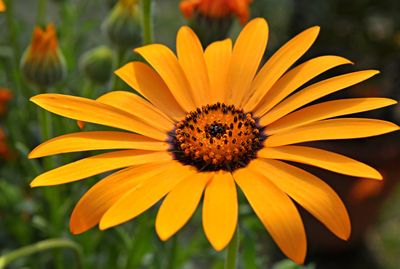Problems with Cape Marigold Plants
Given the right conditions, problems with cape marigold may begin with their invasion and stopping it. Confine them to appropriate spots in the landscape where they can be easily contained. Deadhead regularly to prevent their spread. Soil that is too rich creates Dimorphotheca problems. This flower grows well in sandy, well-draining soil and will even grow in amended clay. An attractive covering of mulch helps retain moisture. If you’re asking what’s wrong with my cape marigold, because it is overgrowing and flopping, the soil may be too rich. Problems with cape marigolds not blooming during the hottest days of summer sometimes arise. Continue to water lightly. Blooms often return when temperatures fall back around 80 degrees F. (27 C.) or less. Cape marigold problems may include aphids drawn by tender, young foliage. If you see a swarm in that area of your plants, blast them off with the garden hose. If plants are too tender for this treatment, spray with insecticidal soap, or neem oil. Keep an eye out for them on nearby plants, as they may swarm around those too. Release a stand of ladybugs in your flower beds to make short work of bothersome aphids. Don’t allow crowding in your beds when growing this African daisy relative. Cape marigold issues include fungal disease, so good air circulation is vital. Water at the roots, since getting foliage wet increases chances of fungal issues. If you see powdery mildew on the leaves, treat with horticulture soap spray.
